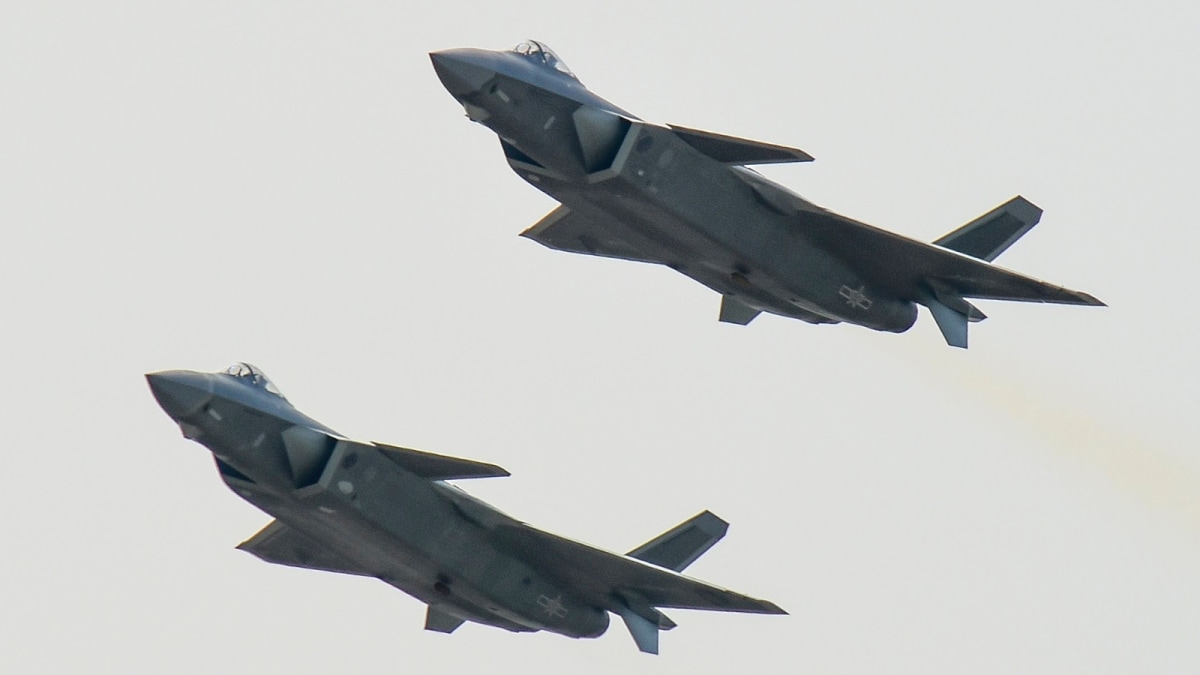Last Updated:
The J-20A’s AESA radar is around 50% more powerful than the F-22’s, allowing it to detect enemy aircraft at much longer ranges

The J-20A boasts advanced aerodynamics and a stealth design, featuring a very low radar cross-section front profile. (Representative/AP)
China has unveiled the J-20A, an upgraded version of its fifth-generation stealth fighter jet, the J-20.
Known as the “Mighty Dragon,” this advanced aircraft marks a significant advancement for the People’s Liberation Army Air Force (PLAAF), featuring several enhancements that set it apart from earlier J-20 models and US fighters such as the F-22 and F-35. The primary objective of the J-20A is to achieve air superiority, and it is designed for long-range strike missions.
Recommended Stories
Engine And Power
- To power the J-20A, China has installed two Shenyang WS-15 afterburning turbofan engines, which generate approximately 180 kilonewtons of thrust. These engines are more powerful than those in the US F-22 and F-35.
- The WS-15 engines provide supercruise capability, allowing the jet to fly at speeds of Mach 1.2 or higher without afterburner. The engine upgrades have enhanced long-range missions, fuel economy, and defence against enemy radar.
- Additionally, it is capable of future deployments of weapons such as directed energy weapons. Earlier J-20 models relied on the Russian AL-31 or older Chinese WS-10 engines, which were less reliable and vulnerable.
- The J-20A boasts advanced aerodynamics and a stealth design, featuring a very low radar cross-section (RCS) front profile, making it difficult to detect from the front.
Special Features
The chinned forebody and Diverterless Supersonic Inlet (DSI) hide the engine blades from radar, while saw-tooth edges and beveled edges reduce the radar signature. Radar-absorbent materials, along with a new nosecone and intake design, further improve stealth capabilities.
Avionics And Sensors
- The J-20A includes a state-of-the-art glass cockpit, helmet-mounted display (HMD), and multi-spectral sensors.
- Its electro-optical system uses technology similar to the F-35’s Distributed Aperture System (DAS) for 360-degree coverage.
- The Active Electronically Scanned Array (AESA) radar is approximately 50% more powerful than that of the F-22, enabling the detection of enemies at long ranges.
- A fusion system of sensors allows passive detection and triangulation, meaning the jet can locate enemies without emitting a signal.
Weapons And Capabilities
- The J-20A’s internal weapons bay can accommodate long-range air-to-air missiles such as the PL-15 (200 km) and PL-21 (400 km).
- The side bays carry short-range PL-10 missiles, which can be fired even with the bays closed.
- If necessary, the aircraft can fly in ‘Beast Mode’ and carry up to 8 long-range missiles under the wings.
- It has an internal fuel capacity of approximately 12,000 kg and a combat range of around 2,000 km. Capable of both air-to-air and strike missions, the J-20A can also fly for extended periods with air refuelling.
China
October 07, 2025, 12:28 IST
Loading comments…
Read More



)